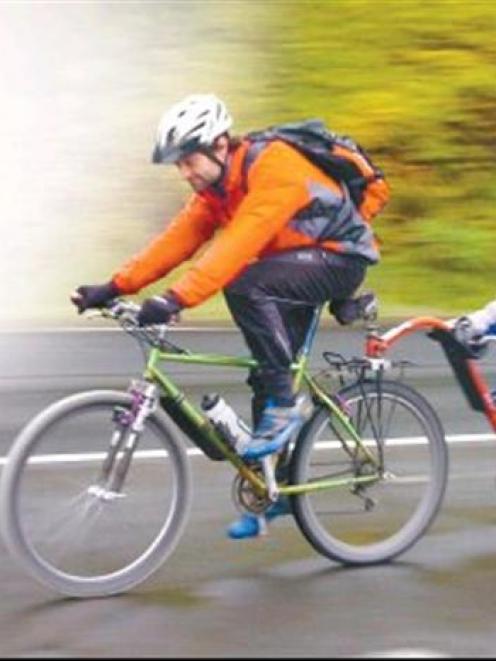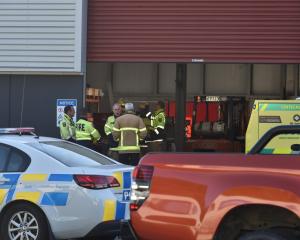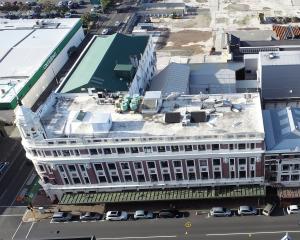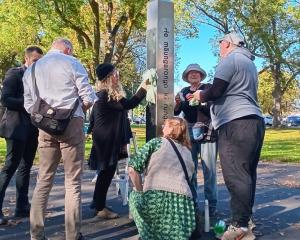
Why would you drive anywhere in Dunedin when it is possible to cycle from one side to the other in half an hour?
That is Norman Dunroy's reaction to questions why, three months after arriving in Dunedin from London, the family still has not bought a car.
Every school day, Mr Dunroy cycles with his son Malin (5) in tow from Waverley to the Dunedin Rudolf Steiner School in Ravensbourne and back, while his wife Helen cycles daily to work at Dunedin Public Hospital.
Mr Dunroy said the family would eventually buy a car, but for now they were in no hurry.
The Dunroys are just one family among a growing number of people turning to cycling for recreation and as a cheaper, greener mode of transport.
Anecdotally, cycle lobby groups say recreational cycling is becoming more popular and more people are cycling to work.
Statistics New Zealand figures back that claim as cycle imports outstripped cars by 64,000 in 2007 and 34,000 in 2006.
Browns Avanti Plus Cycle Specialists owner Stu Thomas said the number of cycle sales was steadily increasing, even during winter, traditionally a hard time to sell cycles in Dunedin.
While rising petrol prices had prompted some people to turn to pedal power, the lack of car parking in the central city made cycling quicker and easier than driving, he said.
Figures from the 2006 census show 1.9% of commuters cycled to work and 11.1% walked or jogged in the Dunedin City Council area.
Nationally, 18% of New Zealanders were regular cyclists, riding at least once a month, while 3.5% cycled every day.
Spokes Dunedin member Dick Martin said the Government wanted to see 30% of all trips made by cycling or walking by 2040.
"If cycling is going to be part of the process towards sustainable transport and health targets that is a very mild target.
"The Government is making the right noises, but not making the commitment."
The Dunedin City Council had made some huge improvements to cycle facilities in the past few years, but it was limited by insufficient funds, Mr Martin said.
"I don't think funds made available for cycle-specific work reflect the proportion of cyclists on the road."
Last year, the council spent $151,000 of its $20 million transportation operations budget on cycling facilities.
This financial year spending is planned to increase to 1.8% of the more than $27 million budget and to 3.9% of the more than $31 million budget the following financial year.
One of the goals of the 2006 transportation strategy is to increase the number of people walking or cycling to work.
It also includes a long-term vision of being able to walk and cycle safely around Otago harbour from Taiaroa Head to Aramoana.
Council senior traffic engineer Bruce Conaghan said the city, including Mosgiel, has 30km of marked on-road cycle lanes and shared cycle and walkways.
"It would be nice to have unlimited funds. We do our damnedest to work with what we can."
The council is shifting its focus from providing piecemeal stretches of cycle lanes to improving the connections with existing cycle lanes, such as linking the cycle lane on the south-bound one-way system to Andersons Bay Rd and through South Dunedin.
A more strategic approach would increase the chances of securing national funds set aside for cycle and walkway projects.
The New Zealand Transport Agency has set aside $18 million this financial year for cycle and walkway projects around the country.
Last financial year $350,000 came from the national pool to extend the cycle and walkway along State Highway 88 another 1.3km to Maia.
Local roading authorities hope to tap into this source as they work to complete the cycle and walkway all the way to Port Chalmers.
About $3 million is needed to complete the project.
However, senior transportation planner Phil Dowsett warned much work needed to be done in the country's biggest cities - Auckland, Wellington and Christchurch - and "$1 million doesn't go that far these days".
Regional projects manager Simon Underwood said lobbying from cyclists wanting better facilities had increased.
Of 90 submissions made to Transit's 2007-08 land transport programme and 10-year financial forecast, 85 related to cycling.
When the first 1.2km section of cycle and walkway along SH88 to Ravensbourne was completed it was an instant success, Mr Underwood said. Early cycle counts before the lane was introduced showed "very few" cyclists on SH88, but a survey carried out last year revealed the dedicated cycle and walkway was used more than 500 times a day.
Harbour Cycle Network co-ordinator Steve Walker said if the next 8.4km to Port Chalmers was completed there would be a "massive rise" in the number of people using it.
"The majority of our members are mums and dads who want to cycle with their kids, but they don't, because it is too dangerous."
If the cycle and walk lane was completed it would be a huge boon to the city, Mr Walker said.
The lobby group, which began four years ago with three people talking in a pub about how great it would be to have safe cycling lanes in Dunedin, now has more than 300 members.
When cyclist Gerard Hyland set up a website promoting the idea of restoring the old Caversham rail tunnel and turning it into a cycle/walkway, he got strong support.
Within a month more than 300 people filled out an online survey, with 99% saying they would use the tunnel, which would open up a flat cycling and walking route into the city from the south.
If the old Chain Hills tunnel, near Wingatui, was also restored, Mosgiel residents would have a flat half-hour ride into the city, he said.
The calls for better cycling facilities are not just coming from cyclists.
Strath Taieri Community Board members expressed concern at the increasing numbers of cyclists on SH87 and called for a cycling lane to be introduced between Mosgiel and Outram.
However for some groups, improving facilities for cyclists is not just about providing more cycle lanes.
Cycling Otago former president Bill Hollick said the club's biggest gripe was the poor maintenance of existing cycle lanes.
The amount of broken glass in cycle lanes was "horrendous" and the club had written to the city council asking for more street sweeping, but had not received a response, he said.
"If the council is genuine about trying to get people on bikes and be more user-friendly, they need to up their rating as far as street sweeping goes."
"For somebody new to the sport, if they keep getting punctures, it's not going to take them long to hang up their bike."
Mr Martin, of Spokes Dunedin, said the behaviour of some New Zealand drivers around cyclists was appalling.
He had just returned from three months in France where the "outstanding" attitude of drivers to cyclists was in stark contrast to New Zealand.
"Many drivers behave really well around cyclists, but a significant minority are aggressive, intolerant and generally contribute to a sense of unpleasantness.
"If more people are going to take to their bikes, there has to be a change of attitude towards cyclists and a recognition cyclists contribute to better conditions for car drivers - every person on a bike is not in a car."
Sport Otago coachforce biking officer Shane Melrose said motorists needed to become aware there were more cyclists on the road.
"There are a lot of near-misses. A lot of the time motorists are not even aware anything has happened because they haven't seen the cyclist."
Only 40% of road cycling crashes are caused directly by cyclists, which is the lowest of any mode, traffic crash statistics show.
"These facts back up the idea that cycling is not dangerous and we should not talk about the dangers of cycling, we should talk about the dangers of motorists."
There were a lot of perceived barriers to cycling and more cycle lanes would encourage more people on to bikes, he said.












